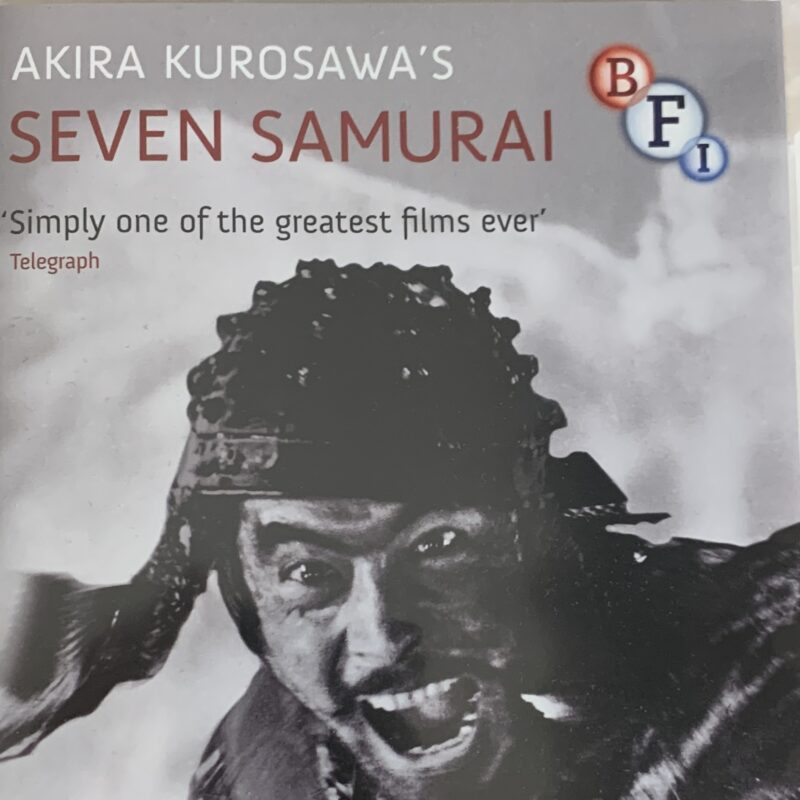It might be intimidating to sit down to a three and a half hour black and white subtitled movie, but when it comes to Akira Kurosawa’s masterpiece Seven Samurai, it’s such an influential and important film that you’ve probably already seen one of its adaptations: one of the two versions of The Magnificent 7 or, believe it or not, A Bug’s Life.
The idea of the underdog small towners asking for help in battling the bad guys fits in just as well in war-torn 16th century Japan as it does in the Old West, and yes, even with ants and grasshoppers. While the underdog story is often enough (that’s why we love Rocky) there’s so much more to this film.
The Reluctant Hero
Toshiro Mifune plays Kikuchiyo, an angry and dirty outsider that would go on to inspire the incarnation of Han Solo and Wolverine. His charismatic and inspiring performance leave you free to ignore the subtitles: you’ll never miss what he’s trying to convey.
The Team Assembly
Long before George Clooney and Brad Pitt put together a dream team to rob a casino, Kurosawa invented the “assemble your team” sequence, allowing the plot to move forward while also giving us mini-stories about each new person joining the story.
Music
Kurosawa was definitely influenced by the American Western genre, particularly by the films of John Ford, and so he believed in the importance of music as part of the story, and the haunting theme of Seven Samurai is something you’ll probably be humming for at least a week after watching the film.
The Long Action Sequence
Way before Michael Bay or Zach Snyder thought that big CGI sequences would be the way to our hearts and minds (not surprisingly, they haven’t been), Kurosawa crafted an action sequence that’s two or three times longer than anything those directors have ever made, but done solely with practical effects, in rainfall. The final hour of the film is essentially an extended action sequence, something we can appreciate so much more now knowing the technology we have at our disposal (and what Kurosawa didn’t).
Gent Themes
At the heart of the story is what these individual samurai will do when desperate, helpless people need assistance. They step up, being content to be paid in food only, and are willing to risk their lives (spoiler alert: some of the seven don’t make it) to help these people, whom they don’t know and some of whom they never meet. Self-sacrifice is inspiring to watch, and perhaps why the film has enduring popularity and has inspired remakes and adaptations is because people continue to be drawn towards heroes and towards masculinity, no matter how much it may be attacked today.
Indeed, the best reason to watch this film might be to be reminded that courage is timeless, and that being a Gent matters in every time and place.
Have you watched Seven Samurai or any of its adaptations? Let us know in the comments.



